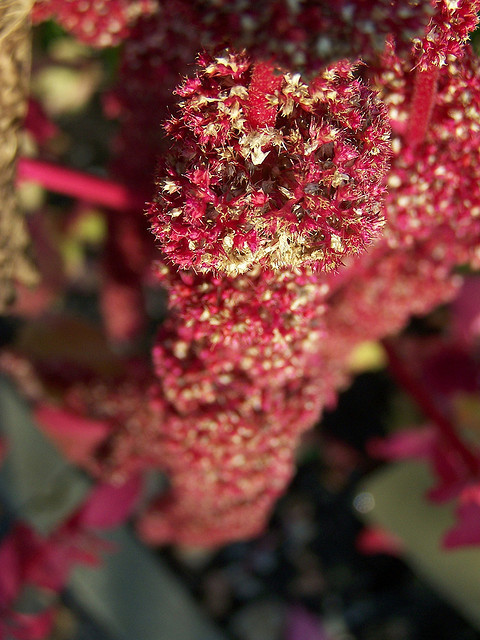Have you tried amaranth?
Amaranth (amaranto in Spanish) is a ancient crop from Mesoamerica said to have made up a large portion of the Aztec people’s daily sustenance.
Due to its flavor and nutritional value, amaranth is currently surging in popularity. It is commonly found in flour or popcorn form, and the leaves are also edible, both in raw salads and cooked recipes.
Here are six awesome reasons why we should consume amaranth on a regular basis:
1. The super grain is high in protein, calcium, iron, potassium, and vitamins A and D. In fact, it’s known to contain about 30 percent more protein than rice, sorghum or rye.
2. It has an incredible amount of fiber (three times more the wheat seed) and is gluten free.
3. It is nourishing and high in unsaturated oils and omega 6 and 3.
4. Amaranth is chock full of all 150 essential amino acids that our bodies need.
5. The crop is resistant to glyphosate, the chemical used in genetically modified Roundup Ready seeds.
6. It is effective in immediately controlling malnutrition. Guatemala has the highest rate of malnutrition in all of Latin America and the fourth highest in the world. Adding amaranth grain to a malnourished child’s daily diet is necessary to prevent stunting and other health problems associated with malnutrition.
Malnutrition in this region of rural Guatemala is high and has been on the rise, especially since family farmers began using genetically-modified seeds and monocropping for export a decade ago.
Support Maya Women Sustainable Farmers using amaranth
Asociación Mujeres Oxlajuj E, is a Maya women’s group in Sololá, which is situated in the Western Highlands of Guatemala around Lake Atitlan and is a Mayan site of sustainable family farming for thousands of years. These women and their neighboring farmers are defending their lands against recent commercialization and the promotion of GMO monocropping for export. They are also battling the rising level of malnutrition in their families and communities due to dwindling biodiversity in the region and fewer natural foods in their diets.
The association is made up of 110 female farmers who grow up to 15 acres of amaranth collectively. They run a store and bakery that sells amaranth-based drinks, ice cream, cakes, cookies, popcorn and flour, as well as organic, homemade shampoos, pesticides and fertilizers.
Currently, the women cultivate their amaranth crop just once per year. They do it manually and it is a tedious and time-consuming process. For about $3,000, we can build them an inexpensive and much-needed thresher, which will cut down their work by 15 hours per acre.
This one machine can save the women more than 200 hours of labor preparing their product, radically increasing their production capacity. Inspired by a local activist friend, I’ve been spearheading the effort to have a thresher built by an area NGO run by eco-engineers, and we’ve already raised almost $600!
2015 is the Year of Soils
On Sunday, May 3, which has been designated International Permaculture Day, we will be hosting a yard sale and seed exchange here in Guatemala to raise funds and expand community consciousness about the benefits of amaranth and other local, sustainable crops.
Friends near and far, how will you celebrate Mother Earth and all the nourishment she provides with us on that day?
~
Author: Michelle Margaret Fajkus
Editor: Evan Yerburgh
Photo: Flickr


 Share on bsky
Share on bsky





Read 1 comment and reply